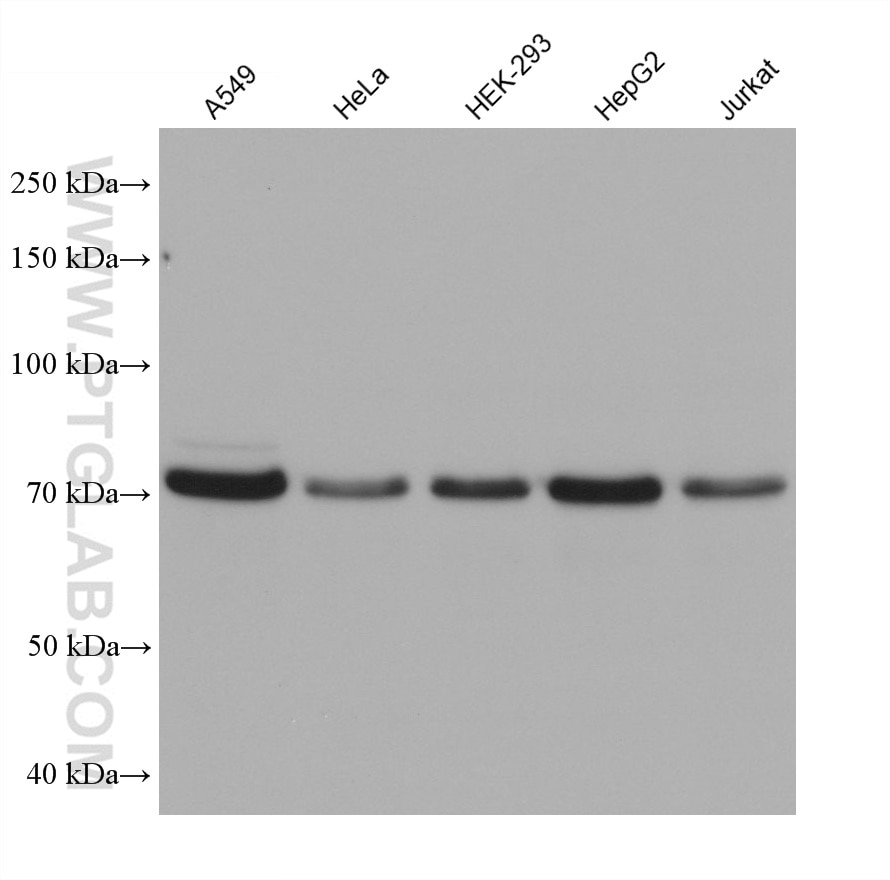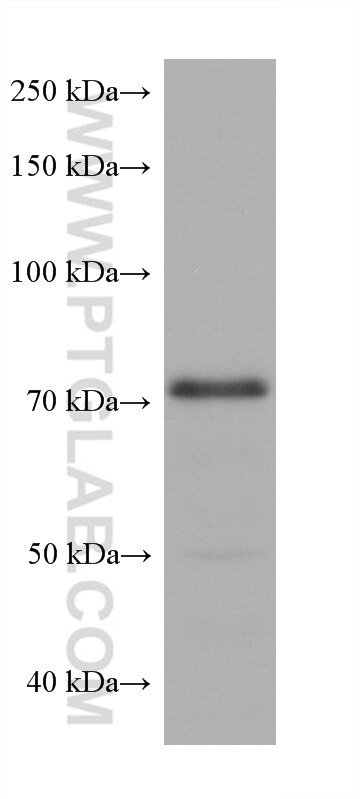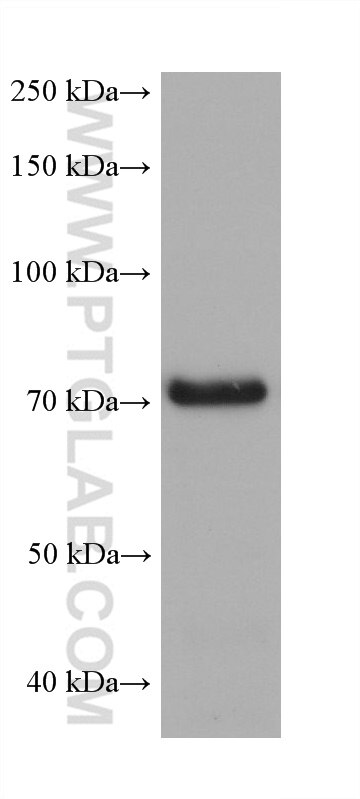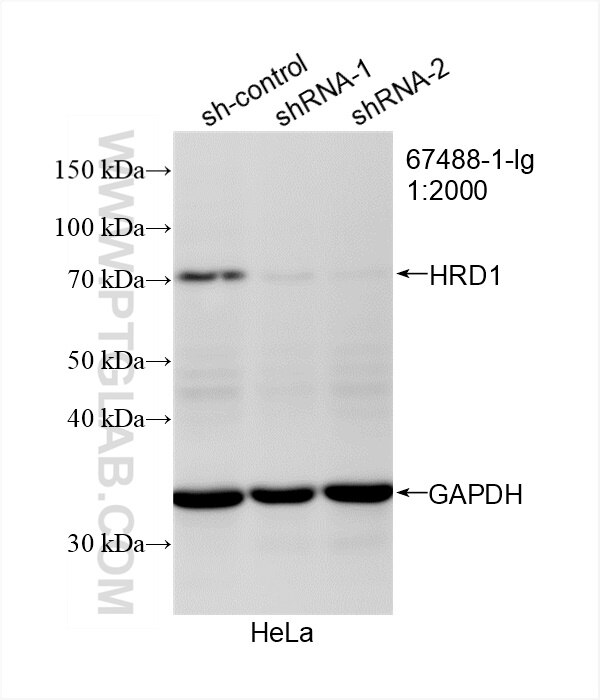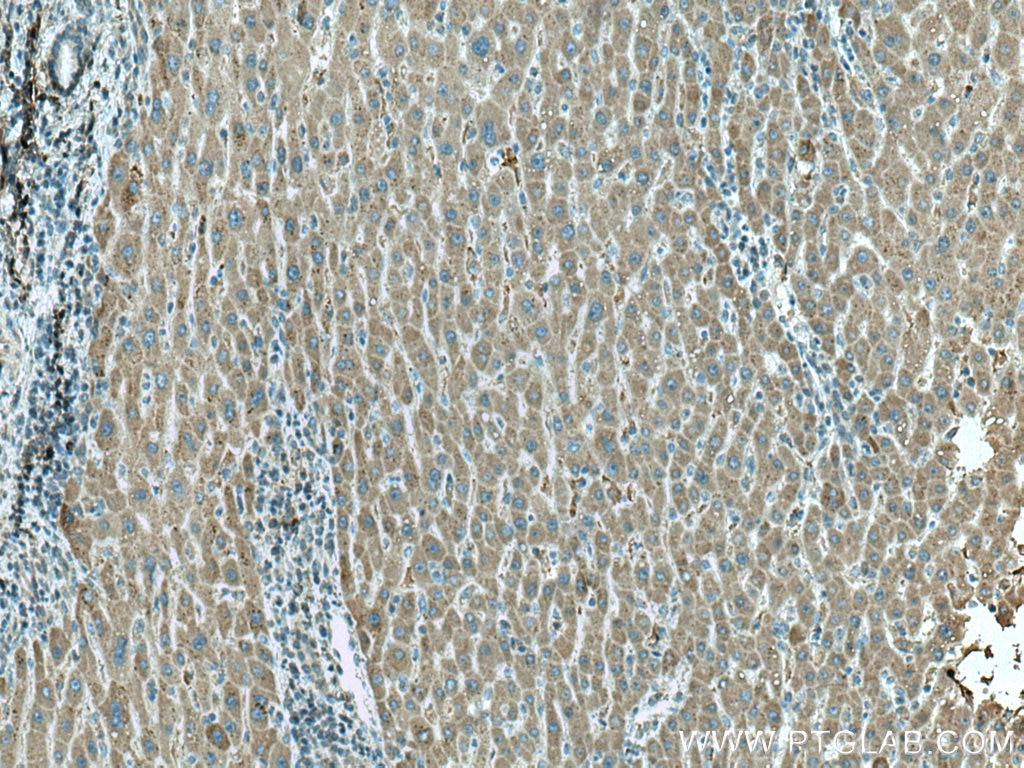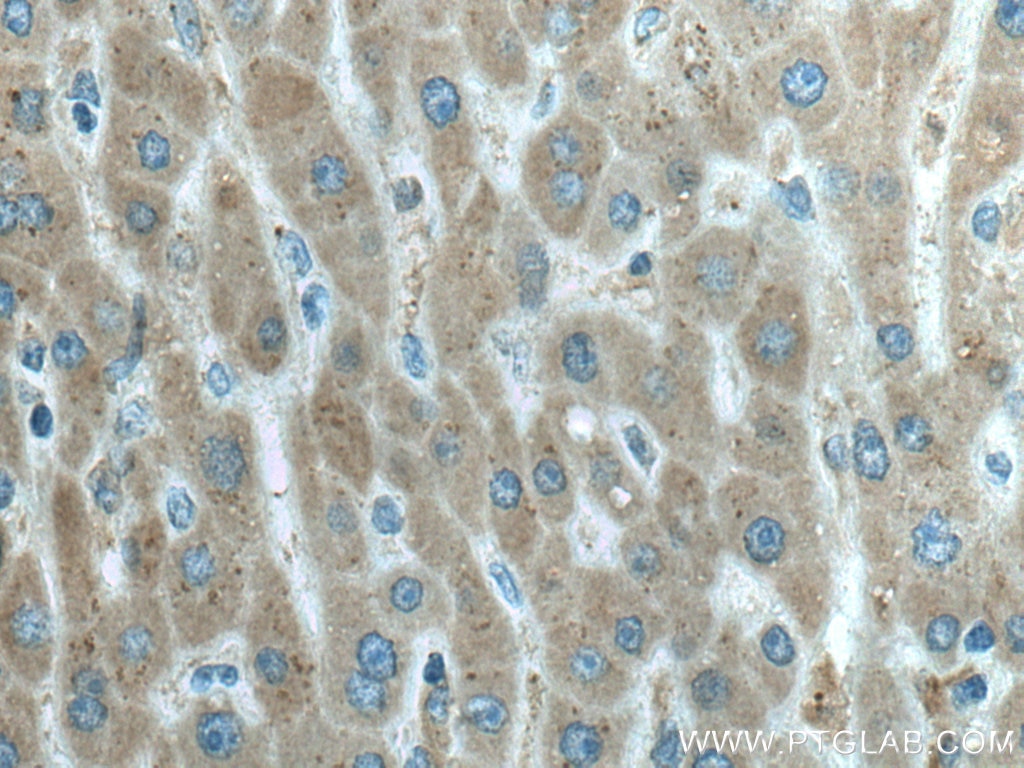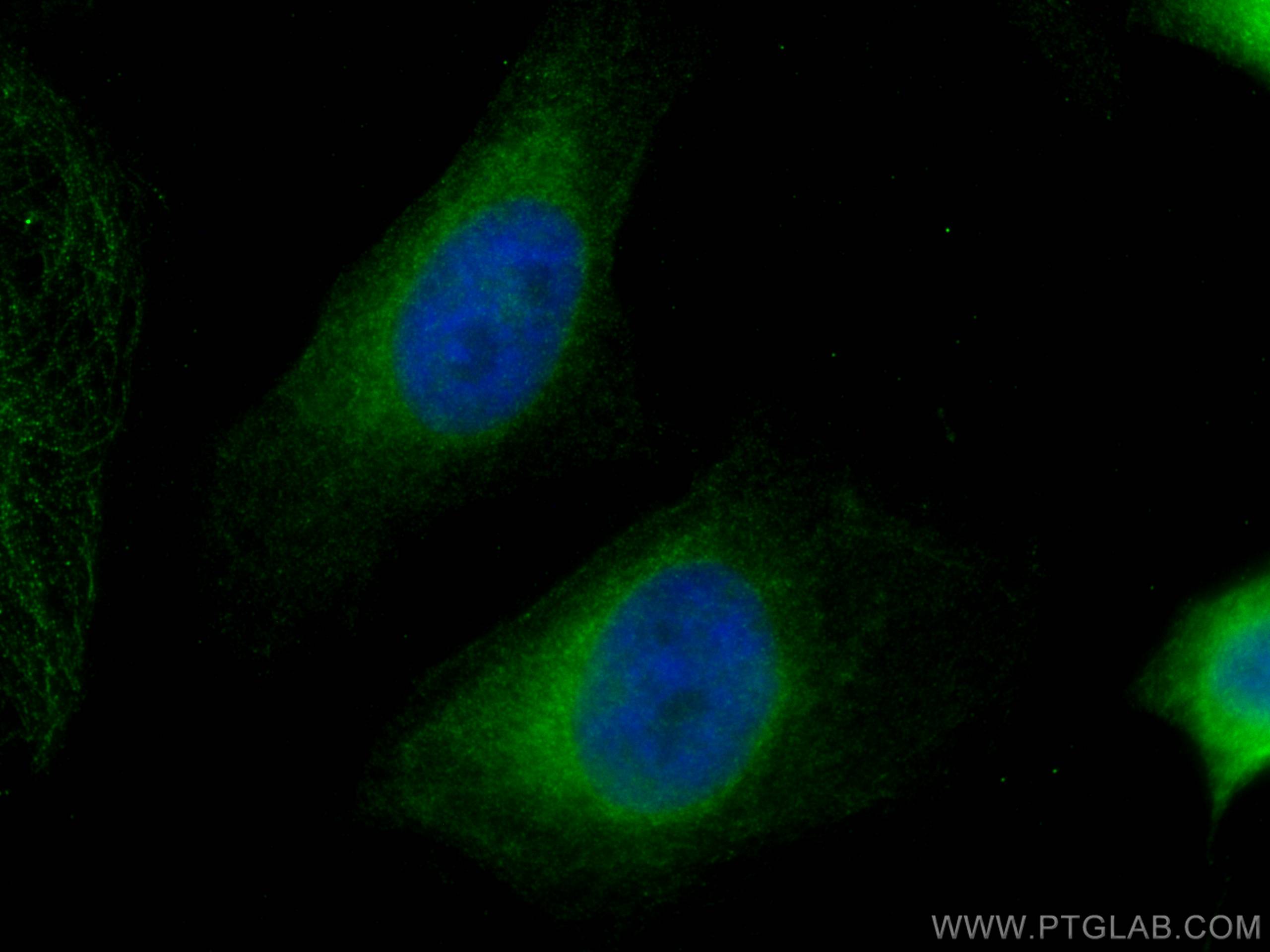Tested Applications
| Positive WB detected in | A549 cells, 4T1 cells, HeLa cells, NIH/3T3 cells, HEK-293 cells, HepG2 cells, Jurkat cells |
| Positive IHC detected in | human liver cancer tissue Note: suggested antigen retrieval with TE buffer pH 9.0; (*) Alternatively, antigen retrieval may be performed with citrate buffer pH 6.0 |
| Positive IF/ICC detected in | HeLa cells |
Recommended dilution
| Application | Dilution |
|---|---|
| Western Blot (WB) | WB : 1:5000-1:50000 |
| Immunohistochemistry (IHC) | IHC : 1:500-1:2000 |
| Immunofluorescence (IF)/ICC | IF/ICC : 1:200-1:800 |
| It is recommended that this reagent should be titrated in each testing system to obtain optimal results. | |
| Sample-dependent, Check data in validation data gallery. | |
Published Applications
| KD/KO | See 1 publications below |
| WB | See 5 publications below |
| IF | See 3 publications below |
| CoIP | See 1 publications below |
Product Information
67488-1-Ig targets HRD1/SYVN1 in WB, IHC, IF/ICC, CoIP, ELISA applications and shows reactivity with human, mouse, rat samples.
| Tested Reactivity | human, mouse, rat |
| Cited Reactivity | human, mouse, goat |
| Host / Isotype | Mouse / IgG2b |
| Class | Monoclonal |
| Type | Antibody |
| Immunogen |
CatNo: Ag4456 Product name: Recombinant human HRD1 protein Source: e coli.-derived, PET28a Tag: 6*His Domain: 242-617 aa of BC030530 Sequence: LFAIRPMYLAMRQFKKAVTDAIMSRRAIRNMNTLYPDATPEELQAMDNVCIICREEMVTGAKRLPCNHIFHTSCLRSWFQRQQTCPTCRMDVLRASLPAQSPPPPEPADQGPPPAPHPPPLLPQPPNFPQGLLPPFPPGMFPLWPPMGPFPPVPPPPSSGEAVAPPSTSAAALSRPSGAATTTAAGTSATAASATASGPGSGSAPEAGPAPGFPFPPPWMGMPLPPPFAFPPMPVPPAGFAGLTPEELRALEGHERQHLEARLQSLRNIHTLLDAAMLQINQYLTVLASLGPPRPATSVNSTEETATTVVAAASSTSIPSSEATTPTPGASPPAPEMERPPAPESVGTEEMPEDGEPDAAELRRRRLQKLESPVAH Predict reactive species |
| Full Name | synovial apoptosis inhibitor 1, synoviolin |
| Calculated Molecular Weight | 617 aa, 68 kDa |
| Observed Molecular Weight | 68-76 kDa |
| GenBank Accession Number | BC030530 |
| Gene Symbol | HRD1 |
| Gene ID (NCBI) | 84447 |
| RRID | AB_2882714 |
| Conjugate | Unconjugated |
| Form | Liquid |
| Purification Method | Protein A purification |
| UNIPROT ID | Q86TM6 |
| Storage Buffer | PBS with 0.02% sodium azide and 50% glycerol, pH 7.3. |
| Storage Conditions | Store at -20°C. Stable for one year after shipment. Aliquoting is unnecessary for -20oC storage. 20ul sizes contain 0.1% BSA. |
Background Information
HRD1is also named as SYVN1(Synovial apoptosis inhibitor 1) , KIAA1810. It acts as an E3 ubiquitin-protein ligase which accepts ubiquitin specifically from endoplasmic reticulum-associated UBC7 E2 ligase and transfers it to substrates, promoting their degradation. Two distinct binding sites mediate Hrd1 dimerization or oligomerization, one located within the transmembrane region and another within the cytosolic domain. (PMID:19864457).Western blot analysis detected abundant HRD1 expression in liver and kidney. Mouse liver and spleen expressed Hrd1 as an 85-kD protein(PMID:12646171).
Protocols
| Product Specific Protocols | |
|---|---|
| IF protocol for HRD1/SYVN1 antibody 67488-1-Ig | Download protocol |
| IHC protocol for HRD1/SYVN1 antibody 67488-1-Ig | Download protocol |
| WB protocol for HRD1/SYVN1 antibody 67488-1-Ig | Download protocol |
| Standard Protocols | |
|---|---|
| Click here to view our Standard Protocols |
Publications
| Species | Application | Title |
|---|---|---|
Cell Mol Life Sci S100A16 promotes acute kidney injury by activating HRD1-induced ubiquitination and degradation of GSK3β and CK1α. | ||
Clin Exp Pharmacol Physiol Attenuation of renal fibrosis in mice due to lack of bombesin receptor-activated protein homologue | ||
Clin Transl Med Circular RNA circARPC1B functions as a stabilisation enhancer of Vimentin to prevent high cholesterol-induced articular cartilage degeneration | ||
Int J Mol Sci Integrative Proteomics and Transcriptomics Profiles of the Oviduct Reveal the Prolificacy-Related Candidate Biomarkers of Goats (Capra hircus) in Estrous Periods | ||
Heliyon Quantitative proteomics reveals the mechanism of endoplasmic reticulum stress-mediated pulmonary fibrosis in mice |

